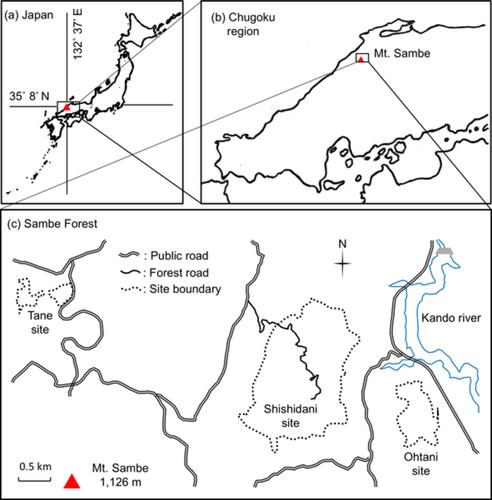当前位置:
X-MOL 学术
›
Ecol. Res.
›
论文详情
Our official English website, www.x-mol.net, welcomes your feedback! (Note: you will need to create a separate account there.)
Observation of leaf phenology of trees in a secondary deciduous broad‐leaved forest in northern Chugoku mountain range, western Japan, from 2004 to 2016
Ecological Research ( IF 2 ) Pub Date : 2020-10-16 , DOI: 10.1111/1440-1703.12160 Yoshinobu Ozaki 1 , Erika Kasai 1 , Tamon Yamashita 2
Ecological Research ( IF 2 ) Pub Date : 2020-10-16 , DOI: 10.1111/1440-1703.12160 Yoshinobu Ozaki 1 , Erika Kasai 1 , Tamon Yamashita 2
Affiliation

|
Long‐term record of leaf phenology of woody plants that have high longevity and that have been growing on the same site for a longer time could be one of the good indicators for assessing the effects of climate change on forest ecosystem functioning. Since climatic conditions could be different among locations, we need to record the phenology of forest plants growing under various climate types. Here, we report seasonal changes in leaf abundance of deciduous trees during a 13‐year period in the Sambe Forest of Shimane University located in northern Chugoku mountain range, western Japan (35°9′N, 132°37′–40′E, 300–628 m above sea level [asl]). Northern Chugoku mountain range is situated in the west end of Japan Sea side climate. Our study would provide the first record of tree phenology in this region. We examined eight species belonging to eight genera common in a secondary deciduous broad‐leaved forest in western Japan. Habitats of native trees ranged from canopy to understory in the forest and pioneers in an open site. Some of trees were exceptionally planted in an arboretum in the Sambe Forest. Leaf types included single leaf (i.e., Carpinus tschonoskii, Swida macrophylla, etc.) and pinnate leaves (i.e., Aesculus turbinata and Phellodendron amurense). We observed changes in the relative leaf abundance caused by budburst, leaf expansion and leaf shedding of the fixed shoots of targeted trees during 3‐day to 3‐week intervals from March to December each year from 2004 to 2016. Over the 13‐year period, we used a digital camera to take photographs of the shoots that were processed to estimate the leaf abundance. Our data was obtained from common tree species that have a wide habitat range and are distributed nationwide. Therefore, comparison of our data with those data in other climate types may significantly contribute to understand the effect of climate change across Japan on forest plants.
更新日期:2020-11-21



























 京公网安备 11010802027423号
京公网安备 11010802027423号